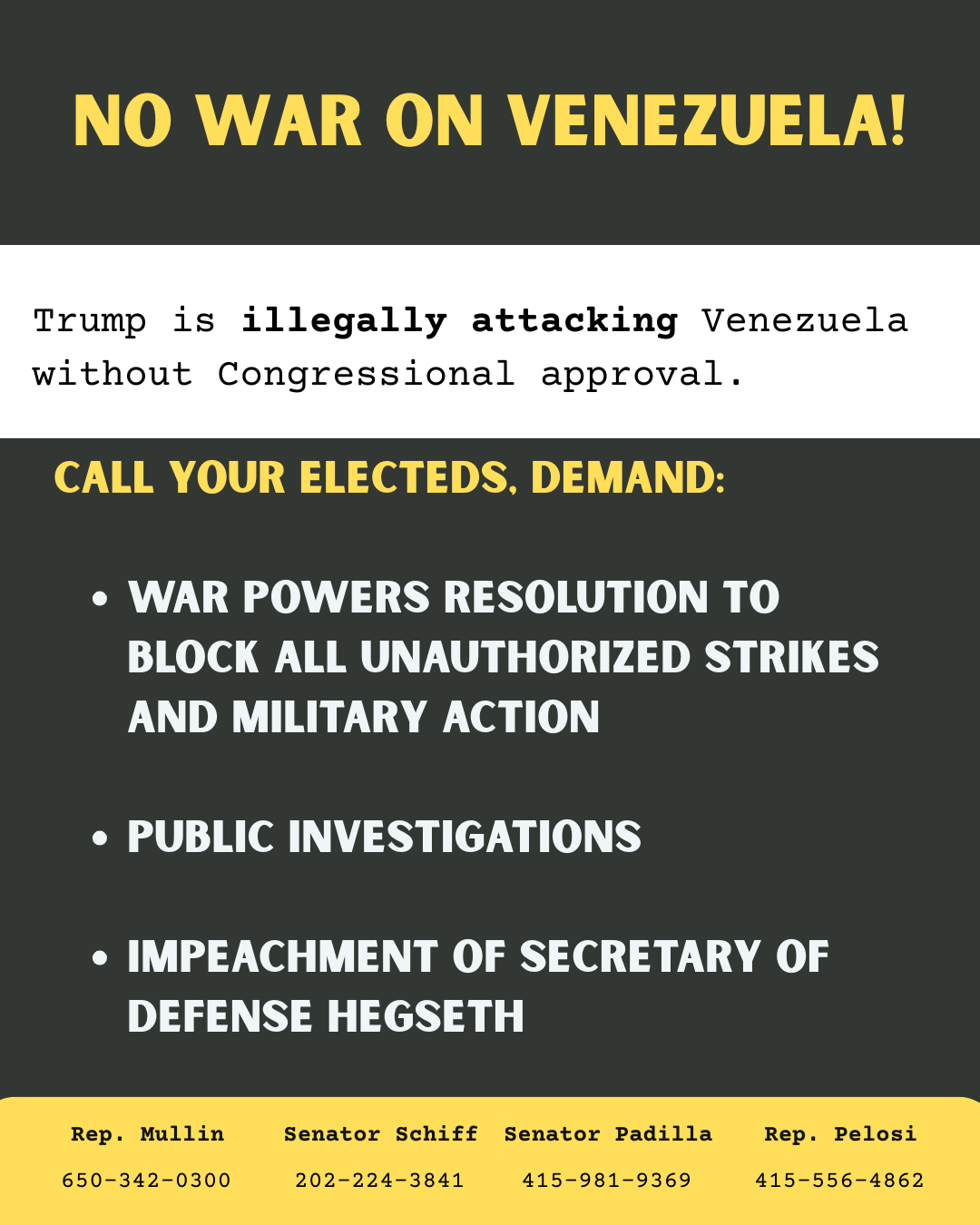Tell your Senators - Block Trump from filling Justice Ginsburg’s seat!
Senator Dianne Feinstein
SF Office: (415) 393-0707
DC Office: (202) 224-3841
LA Office: (310) 914-7300
Fresno Office: (559) 485-7430
San Diego Office: (619) 231-9712
If you can't get through to one office, try another. There is no benefit to calling one office over another. Leaving a voicemail is as good as reaching a live person. Hate the phone? Resistbot is your friend.
Senator Kamala Harris
SF Office: (415) 981-9369
DC Office: (202) 224-3553
Sacramento Office: (916) 448-2787
LA Office: (213) 894-5000
San Diego Office: (619) 239-3884
Call the SF office first, but try the other offices if you can’t get through. If you can’t get a live person, leave a voicemail and also send a follow-up email written in your own words. Hate the phone? Resistbot is your friend.
Call Script
My name is __________. I am a constituent, and my zip code is _______. I am a member of Indivisible SF.
I ask the Senator to please block any attempts by Trump to appoint a new nominee to the Supreme Court. Justice Ginsburg’s dying wish was to not be replaced until after the election—help honor that wish by keeping her seat open.
If they ram through another Supreme Court justice anyway, I want the Senator’s commitment to expand the Court in the next Congress.
Thank you.
Context
On Friday, September 18, 2020, Justice Ruth Bader Ginsburg passed away.
A few Republican senators have said they won’t vote to confirm a new Justice until after Election Day, but we don’t expect the Republicans to play by their own rules. We need to demand that our Democratic senators hold strong to prevent them from confirming another Justice.
Background
Back in 2016, after Justice Antonin Scalia died, President Barack Obama nominated federal Judge Merrick Garland to become the next Associate Justice on the Supreme Court of the United States. Senator McConnell blocked Garland’s nomination from receiving a confirmation vote, and the seat went unfilled until after the inauguration, whereupon Trump nominated and the new Senate confirmed Justice Neil Gorsuch.
Our own Sen. Feinstein has previously dubbed this the “McConnell rule.” Now that we find ourselves in exactly the reverse of the situation four years ago, we must hold the Republicans to the standard they successfully created. No SCOTUS appointments during an election year? OK, if that’s the way you want it, that’s the way it must be this time, too.
This process involves some important dates:
Nov. 3: The end of the general election. All eligible votes must be cast by this date.
Some time later: Over the course of days or even weeks, counties will count ballots (the “canvass of votes”) and states will certify election winners. We’ll know who the popular-vote winner is for the Presidency, and who’s won the Senate and House races.
Jan. 3: The new Congress is sworn in.
Jan. 20: The (hopefully 46th) President is sworn in.
The first phase runs from now until (at least) November: Trump must not successfully appoint anybody until the election is complete and we know who will be president from 2021 to 2025. Assuming he tries, the Senate must block any such nomination, just as they did Judge Merrick Garland’s nomination.
The second phase will run from then into January. The “lame duck” Congress must continue to leave that seat open; the seat must remain open until after the next Congress convenes.
The third phase runs from the start of the new Congress (Jan. 3) until the inauguration (Jan. 20). If Trump has been voted out, the new Congress must continue to hold the seat open until his successor has been sworn in and can appoint Justice Ginsburg’s successor.
We can expect that the second and third phases will be harder than the first. Right now, there’s election pressure: Republican senators don’t want to look like the partisan cowards they are when their jobs are on the line; folks in those states will be pressuring them to play by the same rules they helped push on the country four years ago. After the election, any who are still in power might very well throw scruples to the wind and count on their constituents forgetting all about it in six years.
Another important thing to beware of is recess appointments. When the Senate is in recess, the President can appoint a nominee to the Supreme Court without waiting for the Senate’s “advice and consent”. The appointee would then be on the Court until the end of that Congress, unless confirmed by the Senate once they are back in session. If the next Congress begins without the recess appointee being confirmed, their “Commission” ends and the seat becomes vacant again.
If we lose and Trump gets another justice onto the Supreme Court, it will then have a heavy partisan tilt to the right. One thing the next Congress can do—if we keep the House, take the Senate, and win the White House—is expand the court and fill the new seats with Justices who aren’t right-wing radicals.
This will be a long, hard fight, and this is only the first round. Prepare yourself, take a breath, charge your phone, and let’s get started.







